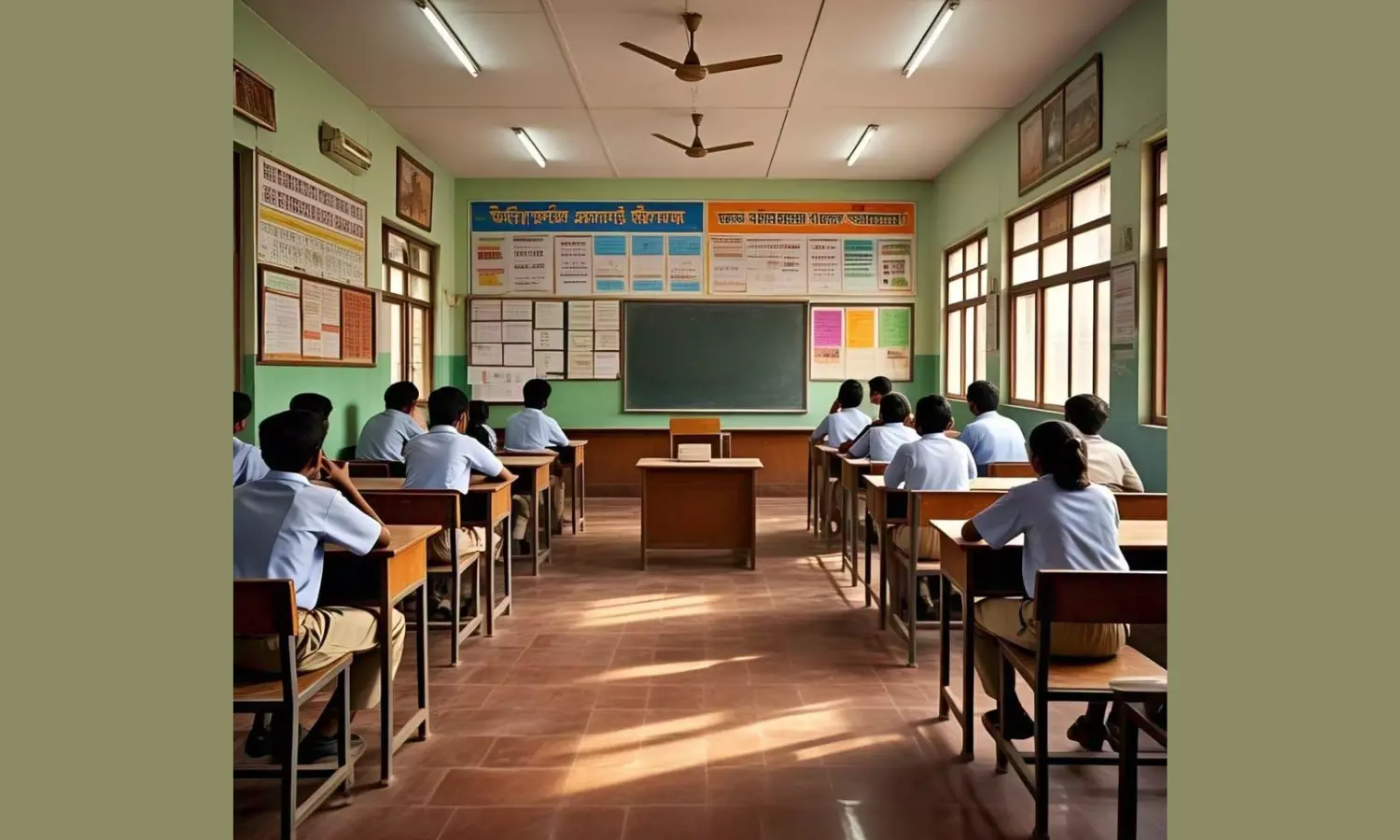Nation Building Starts in Our Classrooms
In an exclusive conversation with Deccan Chronicle, Shaheen Mistri, Founder & CEO of Teach For India, discusses the India & I curriculum, a groundbreaking program that fosters socially and emotionally aware citizens by integrating India's constitutional values with critical 21st-century skills

AI-generated image for representation
In an exclusive conversation with Deccan Chronicle, Shaheen Mistri, Founder & CEO of Teach For India, discusses the India & I curriculum, a groundbreaking program that fosters socially and emotionally aware citizens by integrating India's constitutional values with critical 21st-century skills. By promoting hands-on, student-driven learning, India & I aims to empower students to become active changemakers in their communities.
What inspired Teach For India to develop the India & I curriculum, and how does it differ from traditional rote learning methods?
Teach For India developed the India & I curriculum rooted in the belief that nation-building starts in our classrooms. Rooted in India’s constitutional values—Justice, Liberty, Fraternity, and Equality—along with critical 21st-century skills, it fosters socially and emotionally aware citizens who think critically, take action, and truly embody our constitutional values.
India & I is hands-on and student-driven, helping every child participate and be involved. Lessons are activity-based, promoting real-world exploration, reflection, and decision-making. The curriculum spans five key units—Self, Family, Community, Nation, and World—aligning with children’s developmental milestones. It integrates 8 characters - the 8Cs - courage, compassion, critical thinking, communication, consciousness, creativity, curiosity and collaboration - as key skills to be developed.
How does the India & I curriculum specifically focus on building 21st-century skills and socio-emotional learning in students?
The India & I curriculum develops 21st-century skills and socio-emotional learning by fostering self-awareness, collaboration, critical thinking, and responsibility. Through a progressive framework, students move from understanding the self to engaging with their community, nation, and the world, encouraging them to reflect on their identities, relationships, and impact.
Self Unit: Builds confidence and responsibility as students articulate personal traits, embrace challenges, and practice independence.
Family & School Unit: Strengthens emotional intelligence by recognizing family roles, expressing gratitude, and appreciating diversity.
Community Unit: Develops collaboration and citizenship through engagement with community members, understanding diversity, and fostering inclusion.
Nation Unit: Encourages critical thinking on justice and equality while deepening national pride through India's symbols and heritage.
World Unit: Expands global awareness by comparing cultural customs, reinforcing empathy and global citizenship.
By integrating communication, problem-solving, and leadership across all units, India & I ensures students develop the skills needed to navigate real-world challenges and become responsible changemakers.
What strategies does Teach For India employ to ensure the widespread adoption and effective implementation of the India & I curriculum across different cities and schools?
We ensure the effective implementation of the India & I curriculum through structured training, ongoing support, and collaboration.
Onboarding & Training: Teachers receive initial training on curriculum objectives, pedagogy, and implementation strategies, building confidence for the year-long intervention.
Ongoing Support: Regular check-ins, classroom observations, and collaborative brainstorming sessions help address challenges and celebrate progress.
Peer Learning & Resource Sharing: Teachers engage in a buddy system, share best practices, and access self-development resources to strengthen collective impact.
Data-Driven Approach: Regular assessments and reflections help monitor student progress, refine teaching strategies, and ensure alignment with student needs.
Showcase of Learning (SOL): At the end of each unit, students present creative projects, allowing teachers to assess impact while celebrating student growth.
Flexible Implementation: The curriculum adapts to regional contexts, balancing structure with school-specific schedules.
Through these strategies, India & I fosters a supportive teacher network, ensuring meaningful learning experiences for students nationwide.
How does Teach For India measure the impact and effectiveness of the India & I curriculum, and what metrics or outcomes do you use to assess student growth?
The impact and effectiveness of the India & I curriculum is measured using both qualitative and quantitative data collection methods. Students’ growth is assessed through the Student Assessment Form, conducted three times a year, which tracks progress in two key areas:
21st Century Skills – including communication, collaboration, critical thinking, and creativity
Constitutional Values – principles that guide responsible citizenship and ethical decision-making.
Additionally, qualitative insights are gathered through student interviews, held twice a year, focusing on specific questions that evaluate the impact of the curriculum on their understanding of identity, citizenship, and agency.
Teachers contribute to this assessment through the Teacher Reflection Survey, also conducted three times a year. This survey allows educators to document their observations on student engagement, conceptual understanding, and behavioral shifts related to the curriculum, while also providing feedback on the curriculum itself to support continuous improvement.
By analyzing this data, we ensure that the India & I curriculum effectively nurtures students’ personal and civic growth, continuously refining its approach to maximise impact.
( Source : Deccan Chronicle )
Next Story

